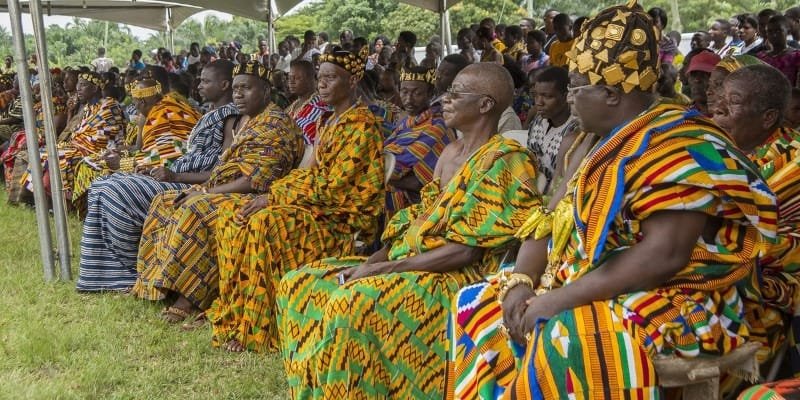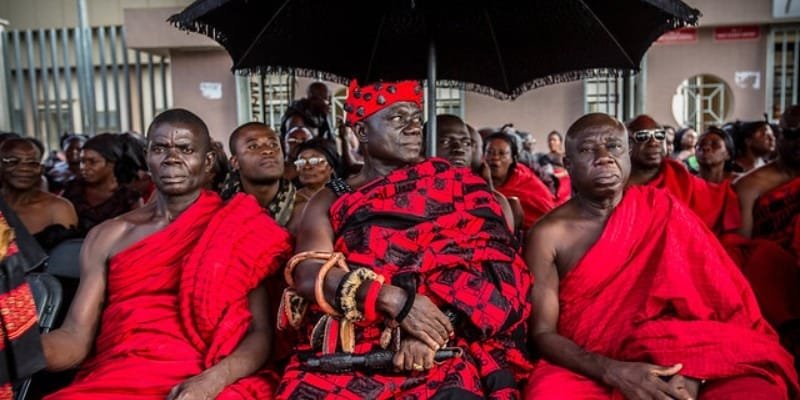The Asante people, also known as Ashanti in English, who are part of the larger Akan ethnic group, represent one of the most historically significant and culturally rich communities in Ghana. With their unique language, customs, and governance systems, the Asante have long stood as symbols of resilience, unity, and heritage in Ghana and across West Africa. This detailed exploration highlights how the Asante people have maintained their rich traditions and identity over centuries, even in the face of external pressures like colonisation, and continue to influence contemporary Ghanaian society.
Origins and Historical Evolution
The Formation of the Asante Kingdom
The history of the Asante people—and also the Ashanti people—began in the late 1600s when a number of Akan city-states, known as Amanhene, were united to form the Asante Kingdom. This unification was led by Osei Tutu, who became the first Asantehene, or king. The creation of the Asante Kingdom was a direct response to the rise of the Denkyira Kingdom, a neighbouring Akan state, which had imposed dominance over several Akan groups. With the help of his spiritual advisor, Okomfo Anokye, Osei Tutu was able to unite the fragmented states, forming a powerful confederacy.
A central moment in the formation of the Asante identity was the creation of the Golden Stool, or Sika Dwa Kofi, which is believed to have descended from the heavens through Okomfo Anokye’s spiritual intervention. The Golden Stool symbolizes the soul of the Asante people and their unity. Unlike typical thrones, it is not meant for any individual to sit upon but is revered as the embodiment of the collective power and spirit of the Asante nation. This spiritual symbolism of the stool remains central to Asante’s governance and culture.
Expansion and Military Dominance
Once united, the Asante Kingdom expanded through military conquests, becoming one of the largest and most powerful empires in West Africa by the 18th century. The Asante were renowned for their sophisticated military organization, which enabled them to dominate neighbouring states and defend their territory from external threats. The kingdom’s wealth was largely derived from its control of gold mines and trade routes, allowing it to become a dominant economic power in the region.
The Asante engaged in extensive trade with European powers, especially the British and Dutch, exchanging gold, ivory, and slaves for firearms and manufactured goods. This trade contributed to the kingdom’s growing influence and cemented its place in the global economy. However, the Asante’s reliance on the slave trade, like many West African kingdoms of the time, later led to conflict with European abolitionist movements.

The Anglo-Asante Wars and British Colonization
The growing power of the Asante Kingdom inevitably led to clashes with the British Empire, which sought to establish control over the West African coast. The series of conflicts known as the Anglo-Asante Wars stretched from 1824 to 1900. Despite fierce resistance from the Asante, who were determined to protect their sovereignty, the British ultimately prevailed, leading to the annexation of the Asante Kingdom in 1901.
Although the kingdom was incorporated into the British colony of the Gold Coast, the Asante people remained resilient. The British imposed direct rule, but the Asante maintained their distinct cultural practices and governance structures. The Asantehene was reinstated as a ceremonial figurehead, and the Golden Stool remained a potent symbol of Asante’s identity. This period of colonisation only strengthened the resolve of the Asante people to preserve their traditions and heritage, even under foreign rule.
Language, Governance, and Social Structure
Twi Language: The Lifeblood of Asante Culture
Language is a critical aspect of Asante identity. The Asante people speak Twi, a dialect of the Akan language, which serves not just as a means of communication but also as the medium through which Asante culture is transmitted. Twi is a tonal language, rich in proverbs, idioms, and oral literature that carry the wisdom and values of the Asante people. The use of proverbs is particularly important in Asante society, as they are employed to teach moral lessons, resolve conflicts, and provide counsel.
Through storytelling and oral tradition, the Asante people pass down their history and spiritual beliefs from one generation to the next. The elders of the community, known as Abusua Panyin, play a vital role in preserving these traditions and ensuring that the younger generation remains connected to their cultural roots.
The Asantehene and Traditional Governance
The political system of the Asante people is highly structured and hierarchical, with the Asantehene as the paramount ruler. However, the Asante system is not autocratic; it is deeply rooted in consensus-building and communal decision-making. The Asantehene is supported by a council of chiefs, each representing a particular division or clan within the Asante Kingdom.
Chiefs are often chosen from royal lineages, and succession follows a matrilineal system, meaning that the right to rule is passed down through the female line. This system ensures that power remains within the royal family while emphasising the importance of women in Asante society. Women, particularly the Queen Mothers (Nanahemaa), play a crucial role in governance. The Queen Mother advises the Asantehene and has the authority to nominate future kings, underscoring the gender balance in Asante political culture.
At the local level, the Asante are organised into clans known as abusua. Each clan is responsible for upholding its customs and managing the affairs of its members. Social harmony is a key value within Asante society, and disputes are often resolved through mediation by the chief and council members rather than through legal punishment.
The Spiritual and Cultural Life of the Asante People
The Golden Stool and Religious Beliefs
As noted earlier, the Golden Stool represents the spiritual and political heart of the Asante people. It is believed to house the souls of past, present, and future generations, and it is never allowed to touch the ground. The reverence for the Golden Stool exemplifies the deep spiritual beliefs of the Asante people, where the physical and metaphysical worlds are closely intertwined.

The Asante practice a traditional religion centred on Nyame, the supreme creator god, and various lesser gods known as Abosom, who control natural forces. Ancestor worship is also a key component of Asante spirituality, as it is believed that the spirits of the deceased continue to influence the lives of the living. These beliefs are central to Asante festivals and rituals, where elaborate offerings are made to appease the gods and honour the ancestors.
Festivals: Celebrating Asante Heritage
The festivals of the Asante people are colourful and grand occasions that reflect their deep connection to their ancestors and their cultural roots. The Akwasidae Festival, celebrated every six weeks, is one of the most important festivals in Asante culture. During this festival, the Asantehene and the people pay homage to the Golden Stool and the ancestors through music, dance, and rituals. The festival is also an opportunity for the king to address his people and reaffirm the unity of the kingdom.
Another important celebration is the Odwira Festival, which occurs annually to cleanse the community and mark the harvest. This festival involves purification rites, sacrifices, and communal feasting. It serves to strengthen social bonds and renew the spiritual vitality of the community.
Artistic Legacy: Kente Cloth, Gold, and Craftsmanship
Kente Cloth: A Symbol of Asante Prestige
The most recognisable symbol of Asante artistic heritage is Kente cloth, a vibrant, handwoven fabric that has become synonymous with royalty and prestige. Originally reserved for kings and chiefs, Kente cloth is now worn by Ghanaians across all walks of life, especially during important ceremonies. Each Kente pattern has its own significance, with colours and designs representing various concepts such as wisdom, bravery, or wealth.

Kente weaving is an art form passed down through generations, and its creation is a labour-intensive process that requires great skill and patience. The weavers, predominantly men, work on traditional looms to produce intricate geometric patterns that reflect the cultural values of the Asante people.
The Gold of Asante: A Historical Legacy
The Asante Kingdom’s wealth and power were historically tied to its abundant gold resources, which earned the region the title “Gold Coast.” The Asante people are also known for their expertise in goldsmithing, producing elaborate gold jewelry, ceremonial regalia, and artefacts that have adorned their kings and queens for centuries. Gold continues to play a significant role in Asante culture, symbolizing power, prosperity, and divine favor.
The Contemporary Influence of the Asante People
In modern Ghana, the Asante continue to be influential in both political and cultural spheres. The current Asantehene, Otumfuo Osei Tutu II, is a prominent figure not just in Ghana but throughout Africa. He plays a key role in promoting social and economic development, supporting education through the Otumfuo Education Fund, and advocating for peace and unity.
The Asante people’s contributions to Ghana’s cultural tourism cannot be overlooked. The city of Kumasi, the historical capital of the Asante Kingdom, is a major cultural hub, attracting visitors interested in learning about Asante history, traditional festivals, and craftsmanship. The Manhyia Palace Museum, located in Kumasi, houses important artifacts and provides a detailed history of the Asante monarchy, serving as a center for cultural education.
Conclusion
The Asante people are more than just a historical kingdom; they are living embodiments of Ghanaian tradition and identity. Through their vibrant language, intricate social systems, spiritual practices, and artistic expressions, the Asante have preserved a legacy that continues to thrive today. They stand as custodians of a rich















